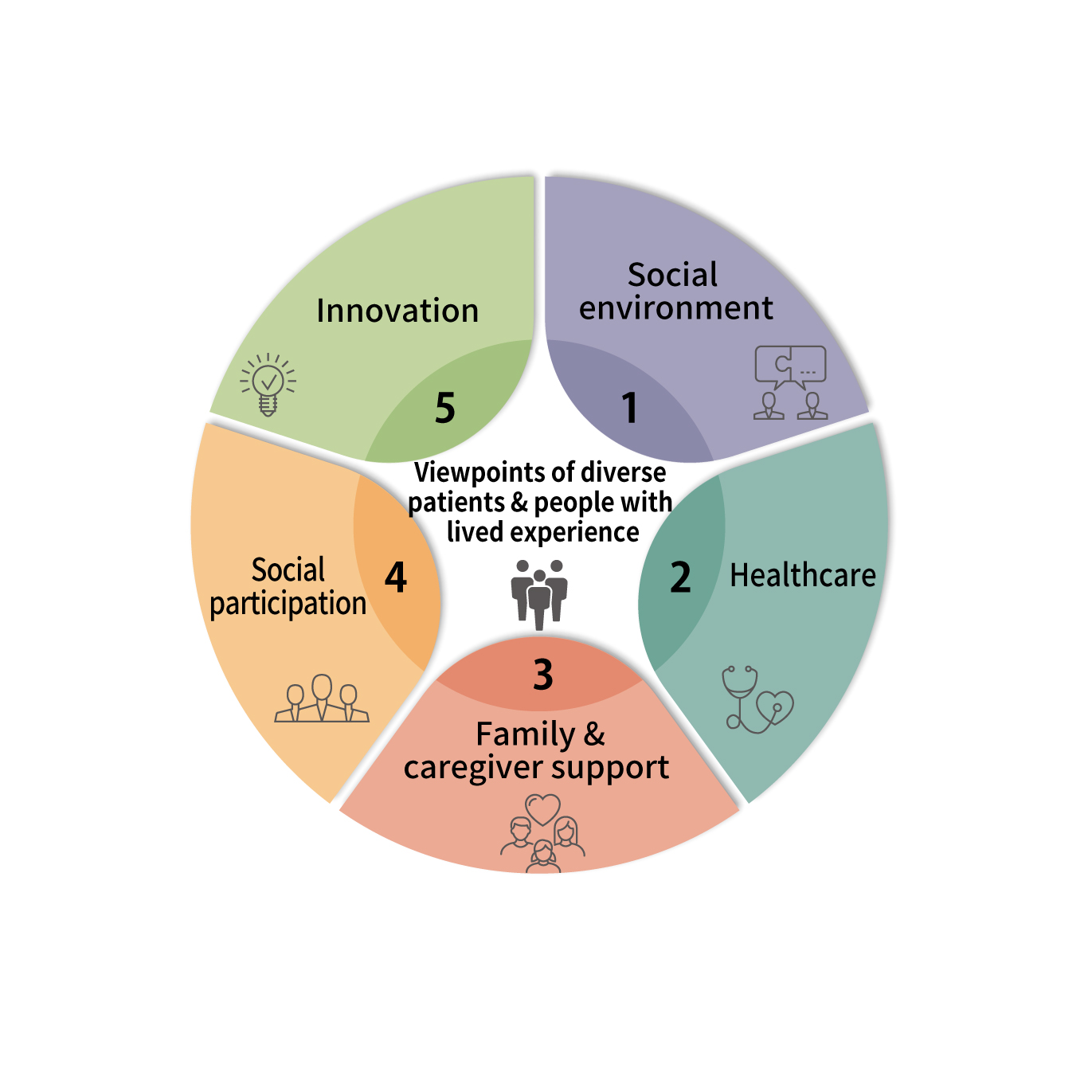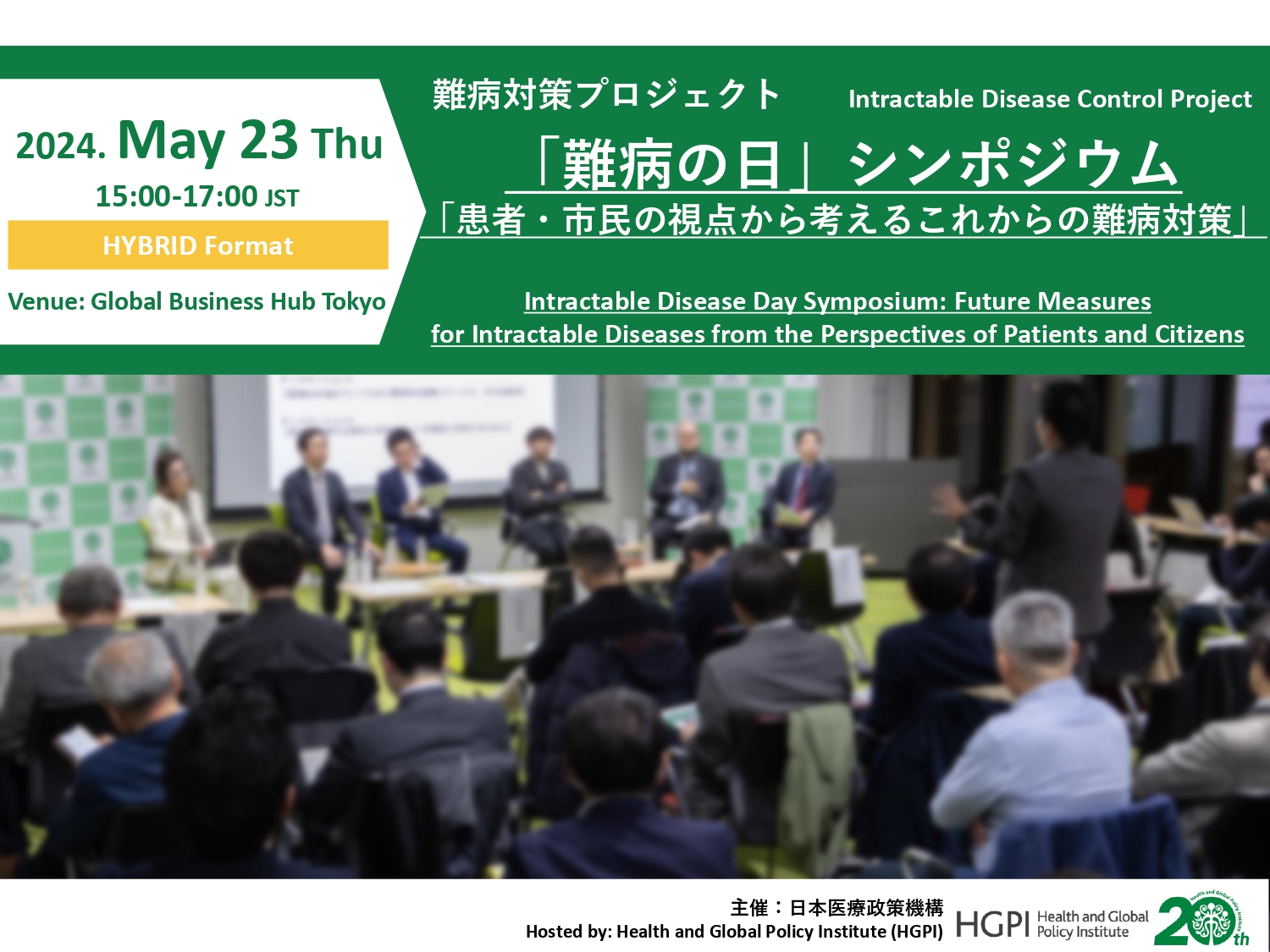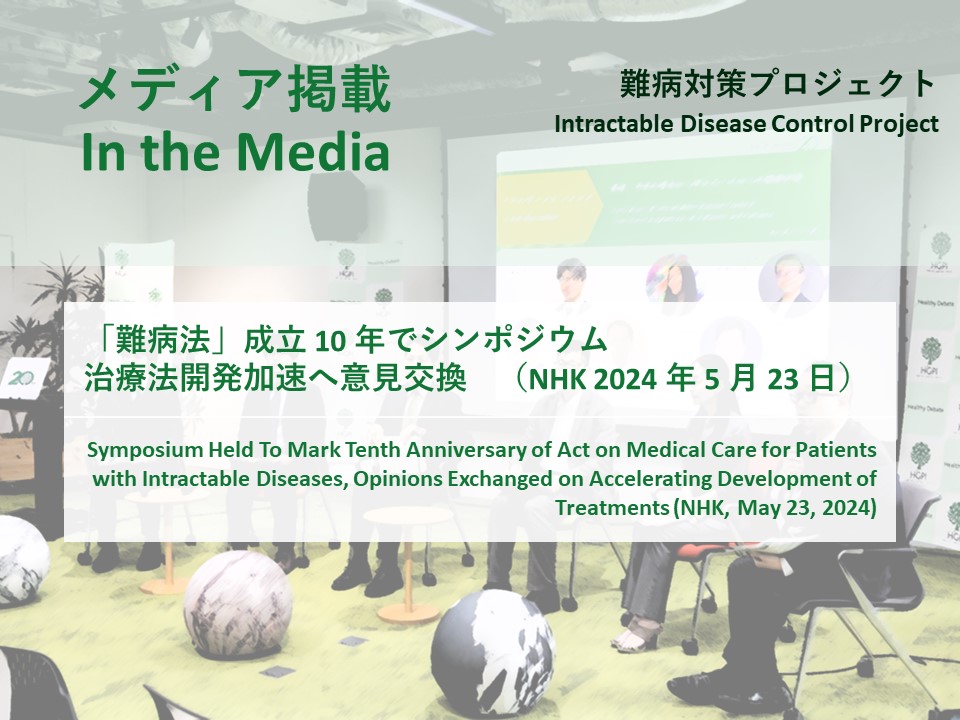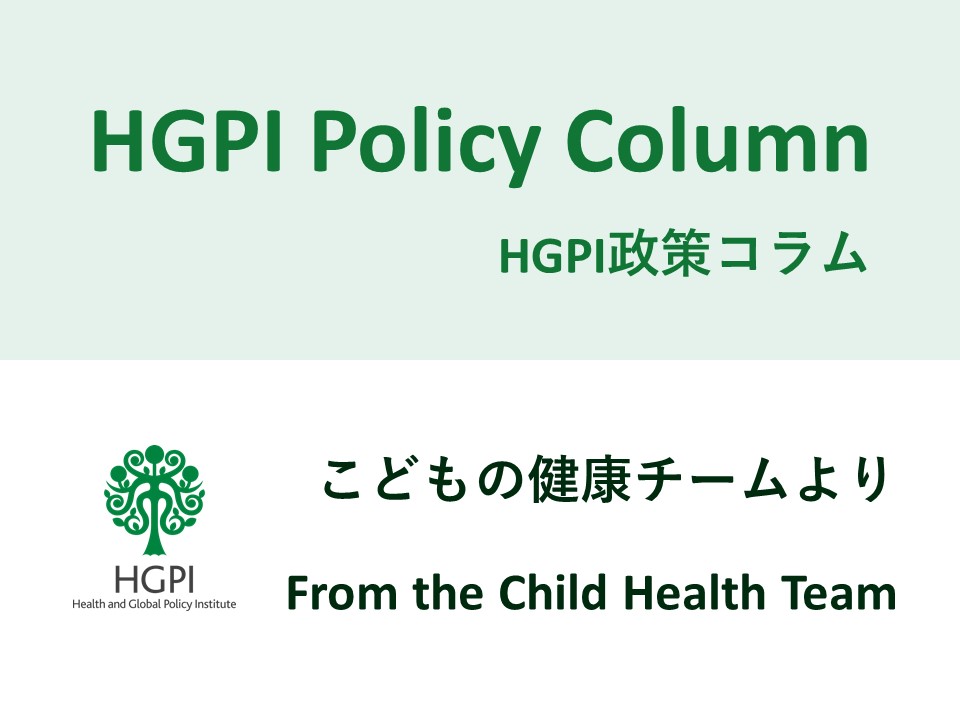[Discussion Points] Intractable & Rare Diseases Project Discussion Paper “Intractable & Rare Diseases 2025: 10 Years After the Passing of the Intractable Diseases Act, Toward a Co-created Future” (March 28, 2025)
date : 4/11/2025
Tags: Other activities
![[Discussion Points] Intractable & Rare Diseases Project Discussion Paper “Intractable & Rare Diseases 2025: 10 Years After the Passing of the Intractable Diseases Act, Toward a Co-created Future” (March 28, 2025)](https://hgpi.org/en/wp-content/uploads/sites/2/HGPI_IntractableAndRareDiseasesProject_20250411_eyecatch.jpg)
The Health and Global Policy Institute (HGPI) Intractable & Rare Diseases Project formulated Discussion Points in Intractable & Rare Diseases titled, “Intractable & Rare Diseases 2025: 10 Years After the Passing of the Intractable Diseases Act, Toward a Co-created Future”.
For details, please view the PDF provided bottom.
■ Executive Summary
This discussion paper is structured around five perspectives: social environment, healthcare, family & caregiver support, social participation, and innovation. Each of these perspectives is crucial in the context of policy for intractable and rare diseases, and were major themes raised at the symposium and in interviews conducted in FY2024. Common and central to all five perspectives are the viewpoints of diverse patients and people with lived experience of these diseases. Patients and people living with intractable and rare diseases come from a wide range of backgrounds and lead their daily lives in diverse living environments. We aim to consider the future direction of relevant policies with this reality in mind.

Perspective 1: Fostering a social environment that enables coexistence From understanding to concrete systems
- The need to reflect in policies the real opinions of patients and people affected by intractable and rare diseases
- The need for activities to raise awareness of intractable and rare diseases among the next generation
- The need to understand patients and people with lived experience of intractable and rare diseases who come from diverse backgrounds
Perspective 2: Creating a healthcare system that alleviates the worries of patients and people with lived experience
- The need for more diverse access points such as pharmacies, local communities, schools, and workplaces, in order to shorten diagnosis lag
- The need to promote technological innovation and cooperation among healthcare institutions to enable early diagnosis and treatment
- The need to design systems based on a life-course approach that accommodates individual characteristics and long-term medical care
Perspective 3: Developing policies that uphold the dignity of families and caregivers
- The need to shed light on the circumstances of families and caregivers, help to reduce their burdens, and support social participation and self-actualization
Perspective 4: Ensuring and enhancing opportunities for social participation (education and employment)
- The need to guarantee diverse learning environments for children living with intractable and rare diseases, and to build flexible education systems
- The need to establish diverse employment options to support the economic independence of patients and people with lived experience
- The need for employment environments that enable medium- to long-term career-building while balancing treatment and work
Perspective 5: Realizing a policy environment where patients and people with lived experience can benefit from innovation
- The need to maintain a public health insurance system that supports society while re-evaluating cost-sharing arrangements
- The need to establish systems that promote the development and implementation of new diagnostic and treatment technologies sought by patients and people with lived experience
- The need for patients and people with lived experience to participate as planning partners in the advancement of medical science, healthcare, and policy
Top Research & Recommendations Posts
- [Research Report] Perceptions, Knowledge, Actions and Perspectives of Healthcare Organizations in Japan in Relation to Climate Change and Health: A Cross-Sectional Study (November 13, 2025)
- [Research Report] The 2025 Public Opinion Survey on Healthcare in Japan (March 17, 2025)
- [Policy Recommendations] Mental Health Project: Recommendations on Three Issues in the Area of Mental Health (July 4, 2025)
- [Policy Recommendations] Developing a National Health and Climate Strategy for Japan (June 26, 2024)
- [Research Report] The 2023 Public Opinion Survey on Satisfaction in Healthcare in Japan and Healthcare Applications of Generative AI (January 11, 2024)
- [Policy Recommendations] Recommendations on Strategic Investments in Policies for Brain Health to Revitalize Japan: Hopes for the New Administration (December 1, 2025)
- [Policy Recommendations] Reshaping Japan’s Immunization Policy for Life Course Coverage and Vaccine Equity: Challenges and Prospects for an Era of Prevention and Health Promotion (April 25, 2025)
- [Announcement] HGPI Endorses the “Belém Health Action Plan” (November 14, 2025)
- [Announcement] HGPI Joins Global Green and Healthy Hospitals (August 1, 2023)
- [Research Report] Survey of Japanese Nursing Professionals Regarding Climate Change and Health (Final Version) (November 14, 2024)
Featured Posts
-
2025-12-09
[Event Report] Special Seminar “Rising to New Challenges in Health Sciences for Future Society: Novel Developments in the Field of Epilepsy in Japan and Globally” Belgium Pavilion Special Seminar, World Expo 2025 Osaka, Kansai (September 18, 2025)
![[Event Report] Special Seminar “Rising to New Challenges in Health Sciences for Future Society: Novel Developments in the Field of Epilepsy in Japan and Globally” Belgium Pavilion Special Seminar, World Expo 2025 Osaka, Kansai (September 18, 2025)](https://hgpi.org/en/wp-content/uploads/sites/2/HGPI_20250805_mental-health-expo-eyechatch.png)
-
2025-12-11
[Event Report] Core Components of Universal Health Coverage (UHC): Achieving “Healthcare Without Financial Hardship” in Asia-Pacific and Japan (December 5, 2025)
![[Event Report] Core Components of Universal Health Coverage (UHC): Achieving “Healthcare Without Financial Hardship” in Asia-Pacific and Japan (December 5, 2025)](https://hgpi.org/en/wp-content/uploads/sites/2/HGPI_20251210_Core-Components-of-Universal-Health-CoverageUHC-top.jpg)
-
2025-12-12
[Registration Open] Meaningful Involvement Promotion Project Urgent Symposium “The New Takaichi Administration and Central Social Insurance Medical Council Reform – Ensuring Patients’ Voices are Heard” (January 22, 2026)
![[Registration Open] Meaningful Involvement Promotion Project Urgent Symposium “The New Takaichi Administration and Central Social Insurance Medical Council Reform – Ensuring Patients’ Voices are Heard” (January 22, 2026)](https://hgpi.org/en/wp-content/uploads/sites/2/HGPI_20251208_urgent-symposium-1.png)
-
2025-12-12
[Registration Open] (Webinar) The 140th HGPI Seminar “Early Detection to Reduce COPD Disease Burden: Connecting Clinical Frontiers with Health Policy” (January 27, 2026)
![[Registration Open] (Webinar) The 140th HGPI Seminar “Early Detection to Reduce COPD Disease Burden: Connecting Clinical Frontiers with Health Policy” (January 27, 2026)](https://hgpi.org/en/wp-content/uploads/sites/2/hs140-top.png)
-
2025-12-16
[Discussion Points] Policy Dialogue “Considering Comprehensive Genomic Profiling from the Perspective of Patient Access: Utilizing the Medical Service Fee Reimbursement System and the Mixed Medical Services Program to Meet the Needs of Today” (November 28, 2025)
![[Discussion Points] Policy Dialogue “Considering Comprehensive Genomic Profiling from the Perspective of Patient Access: Utilizing the Medical Service Fee Reimbursement System and the Mixed Medical Services Program to Meet the Needs of Today” (November 28, 2025)](https://hgpi.org/en/wp-content/uploads/sites/2/eyecatch_Policy-Dialogue_Discussion-Points_20251128.jpg)







